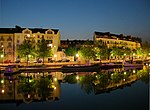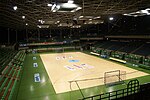La Folle Journée

La Folle Journée is a French annual classical music festival held in Nantes. It is the largest classical music festival in France. The festival's name refers to the Pierre Beaumarchais play The Marriage of Figaro, whose alternative title is La Folle Journée ("The Mad Day"). René Martin founded the La Folle Journée festival in 1995, with the intention of presenting short classical music concerts for diverse audience, on one day. The primary venue is the Cité des Congrès de Nantes. Since its founding, the festival has expanded to cover five days of events. Each year focuses on a theme, initially on composers such as Mozart (1995) and Beethoven (1996, 2020), but since expanding to encompass subjects such as Tolstoy's The Death of Ivan Ilyich (2001). The festival has expanded to other cities in Pays de la Loire, including Challans, Cholet, Fontenay-le-Comte, La Roche-sur-Yon, La Flèche, Sablé-sur-Sarthe, Saint Nazaire, Saumur, L'Île-d'Yeu and Fontevraud-l'Abbaye. Other cities have developed their own festivals based on the format of La Folle Journée, including Madrid, Bilbao, Tokyo, Yekaterinburg, Rio de Janeiro and Warsaw.
Excerpt from the Wikipedia article La Folle Journée (License: CC BY-SA 3.0, Authors, Images).La Folle Journée
Quai Ferdinand Favre, Nantes Centre Ville
Geographical coordinates (GPS) Address Nearby Places Show on map
Geographical coordinates (GPS)
| Latitude | Longitude |
|---|---|
| N 47.213055555556 ° | E -1.5425 ° |
Address
Quai Ferdinand Favre
44021 Nantes, Centre Ville
Pays de la Loire, France
Open on Google Maps











